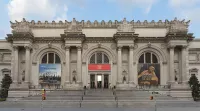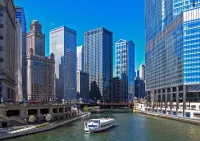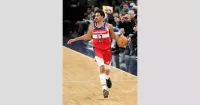Nepal is a landlocked country in South Asia, predominantly located in the Himalayas. It shares borders with China to the north and India to the south, east, and west. Its diverse geography ranges from fertile plains to the world's highest mountains, including Mount Everest. Kathmandu serves as the capital and largest city. Nepal is characterized by its multi-ethnic, multi-lingual, multi-religious, and multi-cultural society, with Nepali as the official language.
1919: Banning of Sati
In 1919, the Hindu practice of Sati was banned in Nepal.
1923: Friendship agreement with the United Kingdom
In 1923, the United Kingdom and Nepal formally signed an agreement of friendship, superseding the Sugauli Treaty of 1816.
1924: Abolition of slavery
In 1924, slavery was officially abolished in Nepal.
1936: Nepal Praja Parishad established
In the 1930s, a vibrant underground political movement arose in the capital, leading to the establishment of Nepal Praja Parishad in 1936.
1950: Treaty of Peace and Friendship with India
In 1950, Nepal and India signed the Treaty of Peace and Friendship, which provides for a much closer relationship between the two countries.
1950: Nepal's Population in 1950
In 1950, Nepal's population was nine million, according to the text.
1950: Life Expectancy
In 1950, the life expectancy at birth in Nepal was 35 years.
1950: Ineffective Government
The ineffective post-1950 government has been a factor in stunting Nepal's economic growth and development.
1951: Advent of democracy
After the advent of democracy in 1951, Nepali literature flourished.
1951: Nepal's Modernization
In 1951, Nepal entered modernity with a literacy rate of 5% and about 10,000 students enrolled in 300 schools.
1951: Nepali Congress overthrew the Rana regime
In 1951, Nepali Congress successfully overthrew the Rana regime.
1951: Introduction of Parliamentary democracy
In 1951, parliamentary democracy was introduced in Nepal.
1951: Nepal Officially Opened to Westerners
Nepal officially opened to westerners in 1951 and became a popular destination at the end of the hippie trail in the 1960s and 1970s.
1951: Expansion of International Trade
Nepal's international trade greatly expanded in 1951 with the establishment of democracy.
August 1955: Diplomatic Relations with China
On August 1955, Nepal established diplomatic relations with the People's Republic of China.
1955: King Mahendra rules
In 1955, King Mahendra began his rule (1955–1972).
1955: Admission to the United Nations
In 1955, Nepal was admitted to the United Nations.
1957: Establishment of Nepal Academy
Nepal Academy, the foremost institution for the promotion of arts and culture in Nepal, was established in 1957.
1958: UN Peacekeeping Missions
Since 1958, Nepal has been one of the major contributors to the UN peacekeeping missions, contributing more than 119,000 personnel to 42 missions.
1959: Arrival of Tibetan refugees
Tibetan refugees began arriving in Nepal in 1959.
1960: End of Democratic Experiment
In 1960, King Mahendra scrapped the democratic experiment, instituting a "partyless" Panchayat system.
1960: Treaty of Peace and Friendship with China
In 1960, Nepal signed the Treaty of Peace and Friendship with China; relations since have been based on the Five Principles of Peaceful Coexistence.
1960: Suspension of Parliamentary democracy
In 1960, Nepalese monarchs suspended parliamentary democracy.
1961: Average Population Growth Rate
The average population growth rate in Nepal between 1961 and 2001 was 2.25%.
1962: Panchayat system initiated by King Mahendra
In 1962, King Mahendra initiated the partyless Panchayat system.
1963: Declaration of Untouchability as Illegal
Nepal declared untouchability to be illegal in 1963 and has since enacted other anti-discriminatory laws and social welfare initiatives.
1964: Stella Kramrisch mentions pre-Dravidians and Dravidians in Nepal
In 1964, Stella Kramrisch mentioned the existence of a substratum of pre-Dravidian and Dravidian peoples in Nepal before the Newars.
1972: King Mahendra's rule ends
In 1972, King Mahendra's rule ended.
1973: Establishment of National Parks
In 1973, the system of national parks and protected areas was first established in Nepal with the enactment of the National Parks and Wildlife Conservation Act 1973.
1985: Liberalization Began
In 1985, Nepal's economic liberalization began.
1990: Liberalization picked up pace
After 1990, Nepal's economic liberalization picked up pace.
1990: Acceptance of constitutional reforms
In 1990, King Birendra accepted constitutional reforms and established a multiparty democracy.
1990: Maternal and infant mortality rates
In 1990, Nepal's maternal mortality rate was 901, and infant mortality was 139.8 per thousand live births.
1990: Overthrow of the Panchayat system
In 1990, the joint civil resistance launched by the United Left Front and Nepali Congress overthrew the Panchayat system.
1990: Toilet Prevalence Rate
In 1990, toilet prevalence rate was 6% in Nepal.
1996: Start of the Maoist bid
In 1996, the Maoist Party started a violent bid to replace the royal parliamentary system with a people's republic, leading to the Nepalese Civil War.
2001: King Birendra's rule ends
In 2001, King Birendra's rule ended.
2001: King Gyanendra inherited the throne
In 2001, following a massacre in the royal palace, King Gyanendra inherited the throne and assumed full executive powers.
2001: Family size and absentee population
In 2001, the average family size in Nepal was 5.44, and the number of absentee people was over a million. The annual population growth rate between 1961 and 2001 averaged 2.25%.
2001: Literacy Rate
In 2001, the overall literacy rate in Nepal (for population age five years and above) was 54.1%.
April 2004: WTO Membership
Nepal has been a member of the World Trade Organization (WTO) since April 2004.
2005: Suspension of Parliamentary democracy
In 2005, Nepalese monarchs suspended parliamentary democracy.
2006: Maoist Party joins mainstream politics
After the Maoist Party joined mainstream politics, in the aftermath of the peaceful revolution of 2006, it also adopted multi-party democracy as its official line.
2006: Maoists entered the political process
After the Maoists entered the political process in 2006, they emerged as the third largest party.
2006: Home-births
In 2006, 81% home-births occurred in Nepal.
May 2008: Nepal Declared a Federal Republic
In May 2008, Nepal was declared a federal republic, ending its status as the world's only Hindu kingdom.
2008: Establishment of a secular republic
In 2008, a secular republic was established in Nepal, marking the end of the world's last Hindu monarchy.
2010: Poverty Reduction
In 2010, 15% of Nepal's population was below the international poverty line (US$1.90 per person per day).
2011: Population statistics from census
According to the 2011 census, Nepal's population was 26.5 million. From 2001 to 2011, the average family size declined from 5.44 to 4.9. The census also noted some 1.9 million absentee people. The annual population growth rate was 1.35% between 2001 and 2011.
2011: Household Possession of Media Devices
According to the 2011 census, the percentage of households in Nepal possessing radio was 50.82%, television 36.45%, cable TV 19.33%, and computer 7.28%.
2011: Anemia in women and children
In 2011, Anemia in women and children started to increase.
2011: Removal of National Dresses
In 2011, Daura-Suruwal and Gunyu-Cholo were removed as the national dresses for men and women respectively to eliminate favouritism.
2011: Literacy Rate
In 2011, the overall literacy rate in Nepal (for population age five years and above) increased to 65.9%.
2011: Religious demographics from census
The 2011 census reported that Hinduism was the religion with the largest number of followers in Nepal, with 81.3% of the population. Buddhism followed with 9%.
2012: Constitution of Nepal 2012
In 2012, the Constitution of Nepal declared Nepal as a secular country, meaning religious and cultural freedom, along with the protection of religion and culture handed down from time immemorial.
2014: Urban Population Estimate
As of 2014, an estimated 18.3% of Nepal's population lived in urban areas.
2014: Agriculture sector vulnerability
As of 2014, the agriculture sector in Nepal is particularly vulnerable as it is highly dependent on the monsoon rains, with just 28% of the arable land being irrigated.
September 2015: Promulgation of the New Constitution
In September 2015, the new constitution was promulgated, making Nepal a federal democratic republic divided into seven provinces.
2015: Adoption of the Constitution of Nepal
In 2015, the Constitution of Nepal was adopted, affirming the country as a federal parliamentary republic.
2015: Nepal referred as 'Federal Democratic Republic of Nepal'
Since 2015, Nepal has been referred to as the 'Federal Democratic Republic of Nepal'.
2015: Sustained protests from ethnocentric nationalist movements
The transition period between 2006 and 2015 saw sustained protests from the newly formed ethnocentric nationalist movements, principal among them the Madhes Movement.
2016: Road Infrastructure
As of 2016, Nepal had just over 11,890 km of paved roads, 16,100 km of unpaved roads, and just 59 km of railway line in the south.
2016: Nepal's Foreign Trade
By the fiscal year 2016, Nepal's foreign trade amounted to Rs 1.06 trillion, a twenty-three folds increase from Rs 45.6 billion in 1990/91.
2016: Public health initiatives
In 2016, Nepal initiated a public health insurance plan, covering health treatments of up to Rs 50,000 for five family members for a premium of Rs 2500 per year. Home-births decreased from 81% in 2006 to 41% in 2016 by paying stipends for antenatal visits and hospitalised delivery.
2016: Nepal's intentional homicide rate
In 2016, Nepal's intentional homicide rate was at 2.16 per 100,000, which is much lower than average. However, police data indicated a steady increase in the crime rate in recent years.
2016: Global Slavery Index
In 2016, The Global Slavery Index estimated that 234,600 people or 0.82% of the population in Nepal were enslaved.
2016: Health statistics
In 2016, anemia in women reached 41% and in children, 53%.
2017: Press Council Nepal Classification
According to the Press Council Nepal classification, as of 2017, of the 833 publications producing original content, ten national dailies and weeklies were rated A+ class.
2017: Life Expectancy
As of 2017, the life expectancy at birth in Nepal was estimated at 71 years, 153rd highest in the world.
2017: Education Statistics
By 2017, there were more than seven million students enrolled in 35,601 schools in Nepal. The net primary enrollment rate reached 97%.
2017: Anti-conversion law
In 2017, Nepal passed a more stringent anti-conversion law.
2017: Volleyball declared national sport
In 2017, volleyball was declared as the national sport of Nepal.
2017: First election according to the new constitution
In the aftermath of the 2017 elections, the first one according to the new constitution, NCP became the ruling party.
2018: Work Permit Applications
Around 2,000 immigrants, half of them Chinese, applied for a work permit in 2018/19.
2018: District Headquarters Connected to Road Network
As of 2018, all district headquarters (except Simikot) in Nepal had been connected to the road network.
2018: Foreign exchange remittances
In 2018, Nepal's foreign exchange remittances amounted to US$8.1 billion, which constituted 28.0% of GDP.
2018: Military Expenditure
In 2018, Nepal's military expenditure was $398.5 million, which was around 1.4% of GDP.
2018: Poverty Reduction
In 2018, Nepal's population below the international poverty line (US$1.90 per person per day) decreased to 9.3%.
2018: International Visitors crossed one million
In 2018, The number of international visitors in Nepal crossed one million for the first time (not counting Indian tourists arriving by land).
2018: Refugee Statistics
In late 2018, Nepal had a total of 20,800 confirmed refugees, 64% of them Tibetan and 31% Bhutanese.
July 2019: Foreign Exchange Reserves
In July 2019, Nepal's foreign exchange reserves were at US$9.5 billion, which was equivalent to 7.8 months of imports.
August 2019: Voice telephony and broadband access statistics
In August 2019, voice telephony subscription rate in Nepal was 2.70% for fixed phones and 138.59% for mobile phones, with 98% of voice telephony through mobile phones. Fixed broadband access was at 14.52%, while mobile data subscriptions provided internet access to an additional 52.71%, nearly 15 million with 3G or better. The mobile voice telephony and broadband market was dominated by Nepal Telecom (55%) and Ncell (40%).
2019: Media landscape overview
As of 2019, Nepal's state operated three television stations, national and regional radio stations. There were 117 private TV channels and 736 FM radio stations licensed. Reporters Without Borders ranked Nepal at 106th in the world in terms of press freedom.
2019: Forest Landscape Integrity Index Score
In 2019, Nepal had a Forest Landscape Integrity Index mean score of 7.23/10, ranking it 45th globally out of 172 countries.
2019: Global Peace Index Ranking
In 2019, Nepal was ranked 76 out of 163 countries in the Global Peace Index (GPI).
2019: Nepal's GDP
In 2019, Nepal's gross domestic product (GDP) was $34.186 billion.
2019: Government's Budget
In 2019, the government's budget was about $13.71 billion (FY 2019/20).
2019: Toilet Prevalence Rate
In 2019, toilet prevalence rate in Nepal reached 99%, from just 6% in 1990.
2020: Expected broadband access
By 2020, broadband access in Nepal was expected to reach 90% of the population.
December 2022: Formation of a coalition government
In December 2022, after the 2022 general election, a coalition government led by Pushpa Kamal Dahal was formed in Nepal.
2022: Recovery of Artifacts
In 2022, Barakat Gallery's London branch relinquished a 16th-century carved wooden Torana and a 17th-century stone statue of a kneeling devotee, both taken from sacred sites near Kathmandu.
2022: Import Restrictions
In 2022, Nepal limited import of non-essential goods after its foreign currency reserves dropped due to the COVID-19 pandemic's impact on tourism spending and remittances.
2023: Discovery of Looted Artifacts
In 2023, Nepalese artifacts suspected of having been looted were found in the Art Institute of Chicago, the Metropolitan Museum of Art, the Dallas Museum of Art, the Rubin Museum and other museums, and turned up in auctions at Christie's, Bonhams and other auction houses.
July 2024: K. P. Sharma Oli becomes Prime Minister for the fourth time
On July 15, 2024, K. P. Sharma Oli was sworn in as Nepali Prime Minister for the fourth time, forming a new coalition with Nepali Congress.
2024: Global Innovation Index Ranking
In 2024, Nepal was ranked 109th in the Global Innovation Index.
2027: Next general election
The next general elections are expected in 2027.
Mentioned in this timeline
India officially the Republic of India is a South Asian...
China officially the People's Republic of China PRC is an...

The Metropolitan Museum of Art or the Met is a...

Chicago is the most populous city in Illinois and the...

Advent is a Christian season of preparation and anticipation for...

Sport encompasses physical activities and games frequently competitive and structured...
Trending

9 months ago Risacher Enters Play-In as Last French NBA Draft Hopeful; Muted Performance Followed.

2 months ago Megan Fox and Machine Gun Kelly: Reconciliation Rumors Sparkle, Sparking Holiday Hope

9 months ago Mike Pence to receive JFK Profile in Courage Award for election action.
Bilal Coulibaly is a French professional basketball player currently playing for the Washington Wizards in the NBA Before joining the...

9 months ago Jordan Poole Claims Wizards Record, Surpassing Bradley Beal, After Rise From Teen

1 month ago Jalen Johnson Achieves Historic Triple-Double, Fastest in Hawks History
Popular

Stranger Things created by the Duffer Brothers is a popular...

XXXTentacion born Jahseh Dwayne Ricardo Onfroy was a controversial yet...

Kelsey Grammer is an accomplished American actor producer and singer...

Candace Owens is an American conservative political commentator and author...

Bernie Sanders is a prominent American politician currently serving as...

Marco Rubio is an American politician attorney and diplomat He...